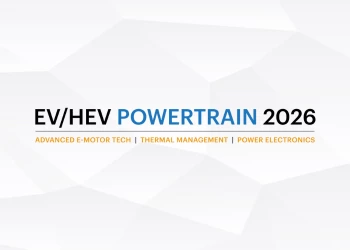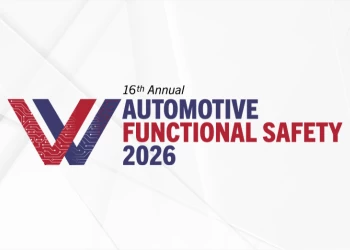NVH: Reducing unfamiliar powertrain noises in electric vehicles
Add bookmarkAccording to the International Energy Agency (IEA), by 2030, 140 million cars will feature either a full electric or hybrid powertrain.
That’s as a result of the OEMs investing heavily to devise electric motors, e-powertrains, gearboxes and other components that produce very little CO2, in order to meet increasingly stringent emissions regulations.
However, one lesser-reported side effect is that as well as producing very little sound when operating, EV powertrains open the door to previously hidden noises coming from the HVAC, the tires or the road, potentially affecting final customer experience.
Although market growth is never certain, the sheer potential for the growth of EV sales is a solid justification for OEMs to take this question very seriously. In Norway, for example, thanks to a healthy program of incentives, nearly a third of all new cars currently being sold are electric or hybrid, followed by 6.4 percent in the Netherlands.
In the UK, meanwhile, figures from the SMMT showed that a record 4.4 percent of all new cars sold in May 2017 were hybrid or pure electric. According to a report from Dutch bank ING, the auto industry is on a path towards 100 percent sales of vehicles with some form of battery-powered assistance by 2035.
How are car manufacturers adjusting Noise, Vibration and Harshness (NVH) strategies?
Engine sounds – as with conventional gas-powered engines – are no longer present to mask noises from several vibration sources that did not need to be considered before vehicle electrification. Likewise, EV powertrains consist of fewer moving parts, creating new sonic challenges for engineers to solve.
“It is more challenging to accurately predict these new types of noise because they are usually generated at a higher frequency level than before, and other non-traditional powertrain physics types like electromagnetics need to be captured during the computer engineering simulation analyses,” says automotive expert Yijun Fan, speaking to the Machine Design website.
According to Fan, electric vehicle powertrains typically consist of an electric motor and a gear reduction system. So, in order to correctly calculate the noise produced by the entire electric powertrain, “dynamic performance and acoustic behavior need to be analyzed together for both the electric motor and the gear reducer.”
In electric cars, gear rattle and gear whine noises occur when particular forces are exerted on the gear mechanism. “While rattling noise is an impact-induced noise generated by the unloaded gear pairs, whine noise can stem from different factors that include the change in tooth stiffness, tooth surface imperfection, or the transmission error resulting from the tooth deformation.”
As explain by Fan, should engineers want to capture these physics behaviors in a systems model, they would need the right means to calculate dynamic-load generation, structural vibration and the acoustic radiation of the gear mechanism.
Solving the acoustic issues of EV powertrains
Engineers are looking at ways to gain initial results and impressions of the acoustic behavior of EV powertrain components, in order to predict how they will actually sound.
“The traditional engineering simulation workflow for such analysis involves a sequential application of a multi-body dynamics (MBD) tool, a finite element analysis (FEA) tool, and – finally – acoustic software, which could be fairly time-consuming, especially when dealing with multiple changes in the design,” says Fan.
At present, it is possible to utilize a co-simulation approach to do modelling within an MBD interface without exporting the results into any acoustics software. Engineers now can compute the results in the background with the use of an acoustics solver, later to be displayed in the MBD interface.
Fan adds: “Together with the acoustic pressure evolution at selected positions and the creation of audible acoustic wave files for listening to the sound.”
These workflows can significantly decrease the associated cost and time to execute acoustic analysis on moving mechanisms – for example a gearbox – opening up the possibility to do more iterations when compared to traditional approaches. “Indeed, the methodology fully automates this workflow into a single simulation environment by embedding an acoustic solver into an MBD tool,” says Fan.
In addition, whenever engineers see fit, they can also go deeper into their analysis by experimenting with acoustic maps or more post-process results, and thus examine the acoustic frequency content of the resulting data.
Taking on the unique challenge of electric motor noise
Electric motor noise presents its own peculiarities, since the noise emission takes place in its vibrating structure where there are internal electromagnetic forces coming out of the air space between the rotor and stator. Fan asserts that, if the frequency of the radial forces on the stator teeth are close to, or equal to, any of the natural frequencies of the stator frame, resonance of the stator will occur:
“This leads to deformation of the stator, which ultimately causes vibrations and generates the noise. Assessing the noise radiated by an electric powertrain therefore requires co-simulation analysis of structural vibrations induced by the electromagnetic forces.”
Not so long ago, Renault engineers in France developed a hybrid engineering simulation methodology that is able to predict electric motor noise. It is based on a connection of the three steps of the process – the predictive computation of electromagnetic forces, structural vibrations and acoustic radiation.
Renault engineers have followed this workflow to corroborate their electric vehicle electrical powertrain designs, incorporating 2D electromagnetic simulation software, structural deformation and acoustic prediction applications. This workflow permits the Renault NVH team to simulate the acoustic radiated power of an EV powertrain at different RPMs up to 10kHz in order to validate the design of their electric motor.
The issues that EVs present to engineers working in perfecting NVH are just some of a very long list of new challenges that the switch to electric vehicles presents. However, as with any new transition, making the change for consumers as painless as possible is of significant importance.
The quiet, calm experience of driving an EV is a significant benefit when compared to an ICE-powered car. Therefore, solving the challenges of tuning out unfamiliar sounds is a priority, if sales are to continue to grow and consumers are to be persuaded to plug in to the EV revolution.
- Interested in the detail of how EV NVH is being dealt with at an OEM and supplier level? Automotive IQ’s Noise Optimization conference takes place in Berlin from 28-30 January, 2020. Get the details here.


















